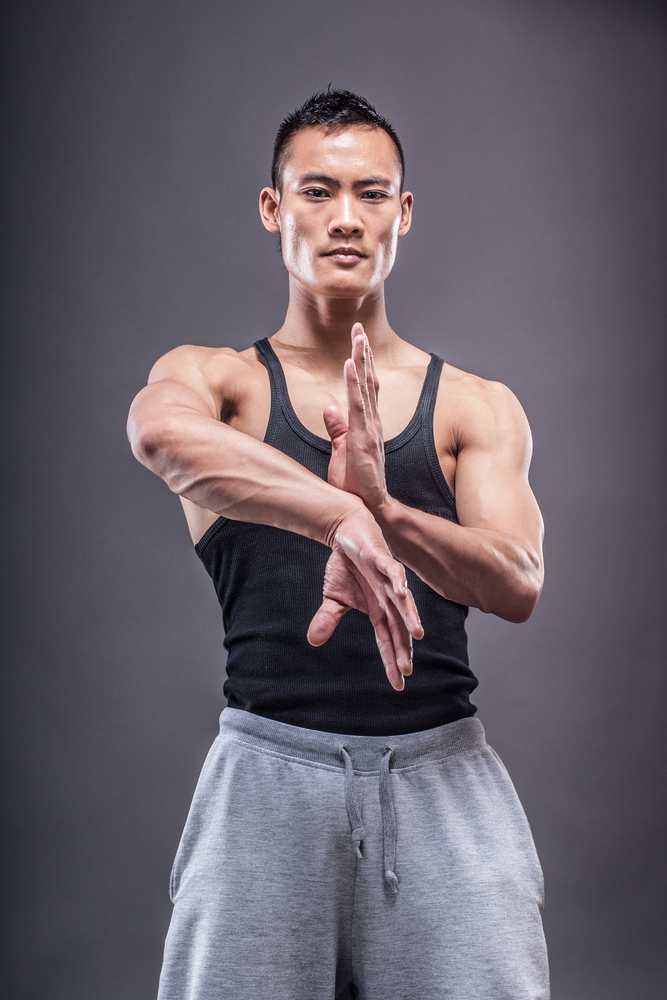Your Guide to Wingchun Training at Home

Many people, especially beginners, ask what they can do from home. For this reason, we will provide a guide on how to have an effective WingChun home workout with little to no equipment.
Warm Up
Any decent workout program is going to start with a warm up to reduce possible injury from more strenuous exercises. We first recommend performing the forms at least 1 to 3 times. The forms are excellent for the dual purpose of both training WingChun as well as warm up the body at the same time. Why are the WingChun forms a good warm up?
Well, they are low-impact and use a natural range of motion which will provide a light dynamic stretch to loosen the joints, muscles, and ligaments. Dynamic stretching is stretching while moving and not holding a static position. Note that you might also want to add other dynamic stretches depending on the exercises in the main workout and your goals. This is especially true for the lower body in which the WingChun forms have fewer movements.
Cardiovascular Endurance
WingChun is designed to be efficient in order to end an encounter quickly. But we cannot guarantee how long a fight will last. So, extra stamina is great to have if you need it. The most common methods are jogging and bike riding. Skipping rope is a good alternative as it is inexpensive and does not require much room. If you are low on time, but still want to train cardio, we recommend adjusting your routine to a HIIT (high intensity interval training) workout which is a short, very intense workout that can burn the same amount of calories or more as jogging. This type of workout includes exercises such as burpees and mountain climbers.
Strength Training
A stronger body will aid your technique when you are against stronger, bigger, and/or better opponents. The tried and true method of strength training in martial arts is calisthenics, which is bodyweight training. This includes exercises such as push ups, squats, various ab exercises, and pull ups. Many of the exercises are shared with gymnastics (except for the tumbling).
Bodyweight training allows you to workout anywhere without the need to go to the gym and is very functional as opposed to just bodybuilding. Believe it or not, you can gain lots of muscle with just your bodyweight. The key is to incorporate different variations and adjust the angle of the exercise, therefore, reducing your body’s leverage in order to make it work harder (Feel free to add weight if the lower body exercises are too easy).
To get the most effective bodyweight workout we recommend the following equipment:
- Pull up bar
- Rings/ suspension trainer
- Resistance bands
- Weighted Backpack
Note that if you have been sitting and looking down at a screen a lot then it is recommended to use ab exercises like planks instead of crunches to reduce tightening the hip flexors and rounding of the neck and back.
WingChun Solo Training
Since this is a WingChun workout, this is where you should spend the bulk of your time. Using a routine that incorporates reps of actual WingChun movements, stances, and combinations will help maintain and even improve your skill. We’ve already discussed practicing your forms. The following are other exercises that should go in your routine:
- Solo applications
- Solo flow
- Shadowboxing
There are two points to keep in mind when training WingChun solo. First, train with reps, sets, and rounds. Counting your reps keeps you on track and ensures that you get the volume needed to sharpen your technique. Your improved coordination will make your movement faster and more efficient.
Second, focus on quality reps. Solo training is not as easy as just doing choreography. Think about the concepts and principles from the applications and incorporate that detailed focus into your training. Deficiencies in technique start with the small things and get magnified when applying under pressure. Also, there is a lot of insight and understanding gained from meditating on the WingChun movements and concepts when you are alone.
Stretching
Stretching helps to maintain a healthy range of movement and is needed to get through athletic exercises as well as prevent tight muscles resulting from strength training. We’ve already covered dynamic stretching in the warm-up. The more difficult and static stretches should be done at the end of the workout because your body is more flexible when the muscles are warm. Some good equipment to help with stiffness is a foam roller and lacrosse ball.
Want a unique program for building WingChun coordination, power, and speed at home? Click below to find out more.